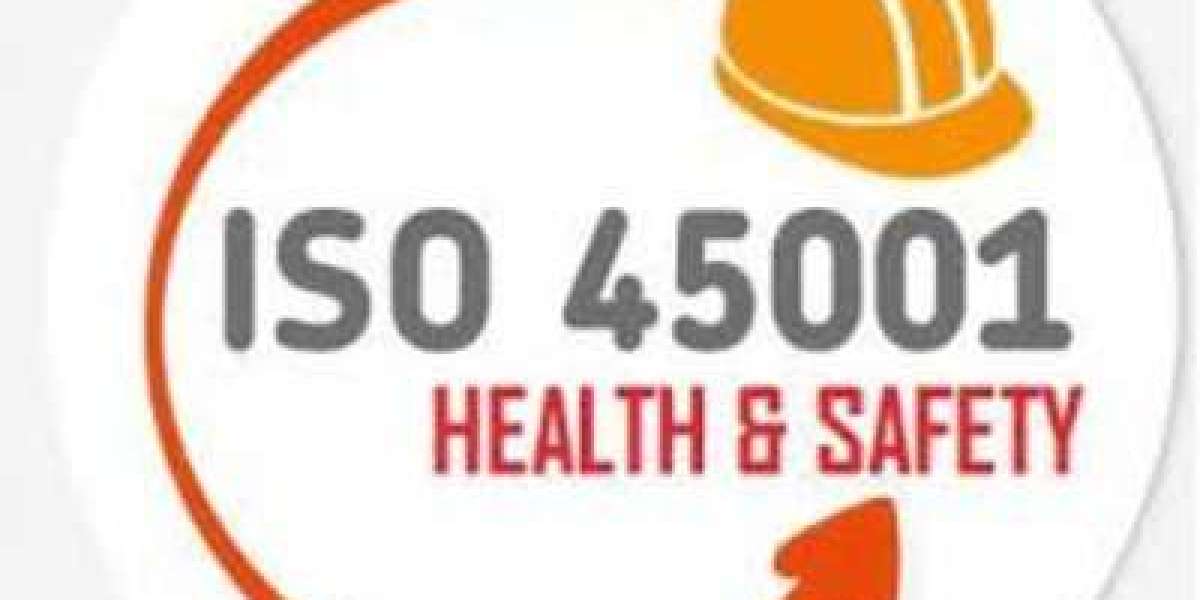Comprehensive Guide to ISO 45001 Training
Introduction
ISO 45001 is an international standard for occupational health and safety management systems (OHSMS). It provides a framework for organizations to improve employee safety, reduce workplace risks, and create better, safer working conditions. ISO 45001 training is essential for organizations aiming to implement or enhance their OHSMS, as it equips employees with the necessary knowledge and skills to identify hazards, manage risks, and ensure compliance with safety regulations. This article explores the importance of ISO 45001 training, the core components of an ISO 45001 training program, the benefits of certification, and the challenges faced during training and implementation.
The Importance of ISO 45001 Training
ISO 45001 training is vital for several reasons, primarily focusing on enhancing occupational health and safety, ensuring regulatory compliance, fostering a culture of safety, and improving organizational performance. One of the foremost reasons for ISO 45001 training is to enhance occupational health and safety. In today's work environment, employees face various hazards and risks that can lead to injuries, illnesses, and fatalities. ISO 45001 training provides employees with the knowledge and skills to identify, assess, and manage these risks effectively. It ensures that everyone within the organization understands their role in maintaining a safe working environment and is equipped to implement the necessary controls to mitigate workplace hazards.
Moreover, ISO 45001 training is critical for regulatory compliance. Many industries are subject to stringent health and safety regulations, such as the Occupational Safety and Health Administration (OSHA) standards in the United States and the Health and Safety Executive (HSE) regulations in the United Kingdom. Non-compliance with these regulations can result in severe penalties, including fines and legal actions. ISO 45001 training ensures that employees are aware of these regulatory requirements and understand how to implement and maintain an OHSMS that complies with applicable laws and standards. This reduces the risk of non-compliance and helps protect the organization from legal and financial repercussions.
Additionally, ISO 45001 training fosters a culture of safety within an organization. The standard emphasizes the importance of leadership, worker participation, and continuous improvement in occupational health and safety. Through ISO 45001 training, employees learn how to engage in safety initiatives, contribute to safety performance, and participate in safety decision-making processes. This culture of safety encourages proactive behavior, where employees are constantly looking for ways to improve safety measures and prevent accidents. It also promotes a sense of ownership and accountability for safety, leading to a safer and healthier work environment.
Finally, ISO 45001 training enhances organizational performance. A safe and healthy work environment contributes to increased productivity, reduced absenteeism, and lower healthcare costs. ISO 45001 training equips employees with the skills to manage workplace risks effectively, leading to fewer accidents and incidents. This, in turn, reduces downtime, improves employee morale, and enhances overall business performance. Moreover, ISO 45001 training helps organizations attract and retain talent, as employees are more likely to stay with a company that prioritizes their health and safety.
Core Components of an ISO 45001 Training Program
A comprehensive ISO 45001 training program covers several core components essential for the effective implementation and maintenance of an OHSMS. These components include understanding the ISO 45001 standard, hazard identification and risk assessment, implementation of controls, and incident investigation and continual improvement.
- Understanding the ISO 45001 Standard The foundation of any ISO 45001 training program is a thorough understanding of the standard itself. This includes familiarizing employees with the structure and requirements of ISO 45001, as well as the key concepts and principles of occupational health and safety management. Training should cover the clauses and requirements specified in the standard, such as context of the organization, leadership and worker participation, planning, support, operation, performance evaluation, and improvement. Employees should also understand the importance of documentation and record-keeping, as ISO 45001 requires comprehensive documentation of the OHSMS and its processes.
- Hazard Identification and Risk Assessment Hazard identification and risk assessment are central to ISO 45001, as the standard focuses on identifying and mitigating occupational health and safety risks. ISO 45001 training should teach employees how to conduct a thorough hazard identification and risk assessment process, which involves identifying potential hazards, assessing the likelihood and severity of these hazards, and determining appropriate risk treatment options. Training should also cover the development and implementation of a risk treatment plan, which outlines the controls and measures needed to mitigate identified risks. Employees should understand how to monitor and review hazards and risks regularly to ensure that the risk management process remains effective and up-to-date.
- Implementation of Controls Implementing controls is a critical component of ISO 45001, as these controls are designed to protect against occupational health and safety risks and ensure a safe working environment. ISO 45001 training should cover the various types of controls specified in the standard, including engineering controls (e.g., machine guards, ventilation systems), administrative controls (e.g., safety policies, procedures, training), and personal protective equipment (PPE). Employees should learn how to select and implement appropriate controls based on the results of the hazard identification and risk assessment process. Training should also emphasize the importance of regular monitoring and testing of controls to ensure their effectiveness.
- Incident Investigation and Continual Improvement Incident investigation and continual improvement are essential for maintaining and enhancing the effectiveness of the OHSMS. ISO 45001 training should teach employees how to conduct incident investigations, which involve identifying the root causes of incidents and implementing corrective actions to prevent recurrence. Training should cover the investigation process, including planning, conducting, reporting, and follow-up. Employees should also understand the importance of management reviews, which involve senior management assessing the performance of the OHSMS and making decisions on necessary improvements. ISO 45001 training should emphasize the concept of continual improvement, encouraging employees to regularly assess and enhance occupational health and safety practices and controls.
Benefits of ISO 45001 Certification
Achieving ISO 45001 certification offers numerous benefits to organizations, extending beyond regulatory compliance and enhancing overall business performance. One of the primary advantages is improved occupational health and safety. ISO 45001 certification demonstrates that an organization has implemented a systematic approach to managing and protecting employee health and safety. This proactive approach significantly reduces the risk of workplace accidents, injuries, and illnesses. It ensures that robust controls and measures are in place to safeguard employees, protect against hazards, and respond effectively to safety incidents.
Another key benefit is enhanced regulatory compliance. ISO 45001 certification helps organizations comply with various health and safety regulations, such as OSHA standards and HSE regulations. Compliance with these regulations is essential for avoiding legal penalties, fines, and reputational damage. ISO 45001 provides a framework for managing compliance requirements and ensuring that the organization’s occupational health and safety practices align with applicable laws and standards. This reduces the risk of non-compliance and helps protect the organization from legal and financial repercussions.
ISO 45001 certification also enhances employee morale and engagement. In an era where employees are increasingly concerned about their health and safety at work, ISO 45001 certification signals to employees that the organization prioritizes their well-being. This can lead to increased employee satisfaction, loyalty, and trust. It also provides a competitive advantage in attracting and retaining talent, as employees are more likely to choose and stay with a company that demonstrates a commitment to their health and safety.
Furthermore, ISO 45001 certification promotes a culture of continuous improvement within the organization. The standard emphasizes the importance of regular monitoring, review, and improvement of the OHSMS. Achieving certification requires organizations to establish robust processes for conducting internal audits, identifying areas for improvement, and implementing corrective actions. This continual improvement process helps organizations stay ahead of emerging hazards, adapt to changing safety landscapes, and enhance their occupational health and safety practices. It fosters a proactive approach to health and safety, where employees are constantly looking for ways to improve and protect themselves and their colleagues.
Challenges in ISO 45001 Training and Implementation
Implementing ISO 45001 can be challenging for many organizations, particularly those new to the concept or with limited resources. One of the primary challenges is the initial investment in training and resources. Developing and implementing an OHSMS requires significant time, effort, and financial resources. Organizations must invest in training their employees, updating their processes, and possibly acquiring new technologies or tools to meet ISO 45001 requirements. This can be a considerable burden, especially for small and medium-sized enterprises (SMEs).
Another challenge is resistance to change. Implementing ISO 45001 often requires significant changes to existing processes and practices. Employees may be resistant to these changes, particularly if they do not understand the importance of ISO 45001 or feel overwhelmed by the new requirements. Overcoming this resistance requires effective communication and training to ensure that all employees understand the benefits of ISO 45001 and are committed to its implementation.
Ensuring ongoing compliance with ISO 45001 principles can also be challenging. ISO 45001 is not a one-time effort but requires continuous monitoring, verification, and improvement. Organizations must establish robust systems for tracking and documenting their OHSMS activities, which can be time-consuming and complex. Maintaining compliance with ISO 45001 standards requires ongoing commitment and diligence from all levels of the organization.
Finally, navigating the regulatory landscape can be a challenge. Different industries and regions may have varying requirements for occupational health and safety. Organizations must ensure that their OHSMS complies with the specific regulations and standards applicable to their industry and location. This can be a complex and daunting task, requiring a thorough understanding of international occupational health and safety standards and regulations.
Conclusion
formation iso 45001 is essential for organizations seeking to implement and maintain an effective occupational health and safety management system. A comprehensive ISO 45001 training program covers the understanding of the standard, hazard identification and risk assessment, implementation of controls, and incident investigation and continual improvement.



